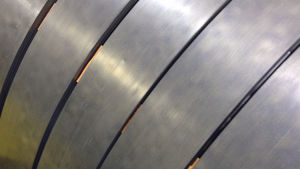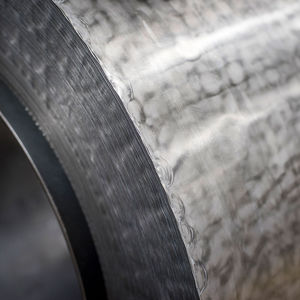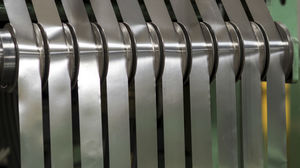
- Materials - Tools - Components
- Semi-finished products
- Steel sheet
- Arnold Magnetic Technologies
Steel sheet Arnon series for aerospace applicationsfor medical applicationslightweight
Add to favorites
Compare this product
Characteristics
- Shape
- sheet metal
- Applications
- for aerospace applications, for medical applications
- Other characteristics
- lightweight
- Width
419.1 mm, 431.8 mm
(16.5 in, 17 in)
Description
Arnold Magnetic Technologies Non Grain Oriented (NGOES) Electrical Steel is optimized by thickness and finish to meet your most demanding needs for high speed, high efficiency motors and high efficiency transformer applications. When optimally applied, NGOES offers reduced eddy currents which translate into energy savings.
SMALLER, LIGHTER, MORE EFFICIENT MOTORS AND GENERATORS
Arnold’s Non Grain Oriented Electrial Steel (NGOES) is manufactured in thicknesses of 0.004″, 0.005″ and 0.007″ (0.102mm, 0.127 mm and 0.178 mm) under the trade names Arnon™ 4, Arnon™ 5 and Arnon™ 7. Typical NGOES electrical steel laminations use 0.0118″ to 0.0185″ (0.30 mm to 0.47 mm) thicknesses.
Arnon™ silicon steel is frequently used as laminations in high speed, high efficiency motors and generators. Whereas common laminations use 0.014″ to 0.032″ (0.356 mm to 0.813 mm) thicknesses, Arnon 5 and Arnon 7 are thinner at 0.004″, 0.005″ and 0.007″ (0.102mm, 0.127 mm and 0.178 mm) respectively. The laminations are located in either the rotor or the stator depending on whether the laminated structure is used in a rotating or stationary design. The laminations are generally made from NGOES since they are circular and the magnetic properties are equal in all directions.
By using thinner laminations, your high speed motor and/or generator can achieve a higher level of performance through improved efficiency.
Catalogs
No catalogs are available for this product.
See all of Arnold Magnetic Technologies‘s catalogsOther Arnold Magnetic Technologies products
PRECISION THIN METALS
Related Searches
- Stainless steel
- Adhesive sheet
- Ferrite permanent magnet
- High-performance permanent magnet
- High-energy permanent magnet
- Flexible sheet
- Steel sheet
- Aluminum alloy
- Copper alloy
- Cold-rolled stainless steel
- Flexible magnet
- Nickel alloy
- Composite sheet
- Cold-rolled steel
- Aluminum alloy for aerospace applications
- Corrosion resistant stainless steel
- Corrosion-resistant nickel alloy
- Stainless steel for medical applications
- Corrosion resistant steel
- Aluminum alloy tube
*Prices are pre-tax. They exclude delivery charges and customs duties and do not include additional charges for installation or activation options. Prices are indicative only and may vary by country, with changes to the cost of raw materials and exchange rates.










